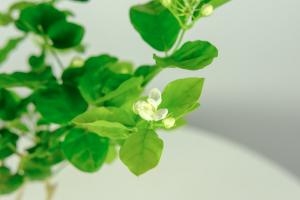Which Part of the Plant Carries Water to its Leaves
For plants to survive, they need water to carry out their activities such as photosynthesis, growth, and metabolism. The plant's transport system is responsible for circulating water and nutrients to all parts of the plant. However, the question of which part of the plant carries water to its leaves is a fascinating one that we will explore in-depth in this article.
The Roots of the Plant
In most plants, the roots are responsible for absorbing water and nutrients from the soil. The root system comprises of the primary root, which is the first root to emerge from the seed, and secondary roots that grow out of the primary root. The roots grow in the soil and expand over a broader area to enhance their ability to absorb water and nutrients effectively.
In the roots, there are tiny hair-like structures known as root hairs that increase their surface area, which facilitates water uptake. The water molecules move across the root cell membrane by the process of osmosis. The movement of water from an area of high concentration to an area of low concentration drives this process.
The Stem of the Plant
Water moves through the stem of the plant, transporting nutrients and other organic compounds to the different parts of the plant. The stem comprises of two parts, the xylem, and the phloem.
The xylem vessels carry water, and minerals absorbed by the plant's roots, from the root to the leaves. These vessels are long and tubular, and they form a continuous network throughout the plant. The water is transported upwards, against gravity, through capillary action, and the cohesion-tension theory. In the cohesion-tension theory, the water molecules are drawn up the xylem vessels by transpiration pull, which results from water loss through the stomata in the leaves.
The phloem, on the other hand, transports dissolved sugars and other organic molecules. The movement of these materials is through the process of translocation, which is facilitated by the pressure-gradient theory. The phloem moves in both upward and downward directions, depending on the plant's need for energy.
The Leaves of the Plant
The leaves of the plant are where the plant carries out photosynthesis, the process by which it produces glucose, which it uses for energy. The leaves are the primary site where water loss from the plant takes place through the stomata.
The stomata are pores on the leaves' surface responsible for gas exchange, allowing the plant to take in carbon dioxide to produce glucose and expel oxygen. The stomata open and close to regulate water loss, a process known as transpiration. As water is lost through the stomata, it creates a pressure gradient that draws water up the xylem vessels from the roots to the leaves, where it is needed for photosynthesis.
Conclusion
In conclusion, the plant's transport system comprises of the roots, stem, and leaves working together to transport water, minerals, and nutrients. The roots absorb water and nutrients from the soil and transport them to the stem, where they move through the xylem vessels to the leaves. In the leaves, the water is used for photosynthesis, and the loss of water through the stomata creates a pressure gradient that pulls more water up the xylem vessels from the roots. Ultimately, the entire plant's transport system is a complex and interdependent process that ensures the plant's survival and growth.

 how many times do yo...
how many times do yo... how many planted tre...
how many planted tre... how many pine trees ...
how many pine trees ... how many pecan trees...
how many pecan trees... how many plants comp...
how many plants comp... how many plants can ...
how many plants can ... how many plants and ...
how many plants and ... how many pepper plan...
how many pepper plan...































